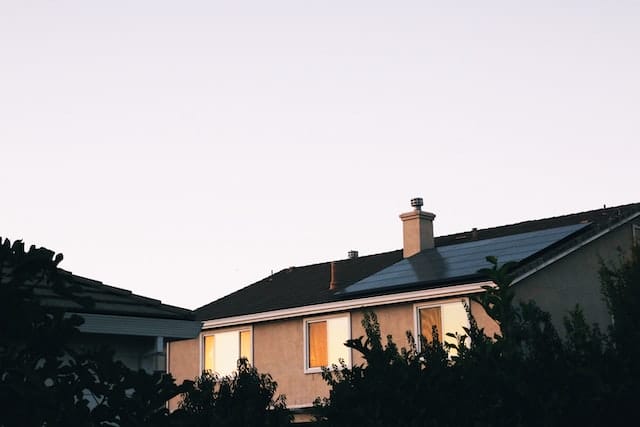The housing market is growing. And as a result of this exponential expansion, our expectations for newly constructed homes are being reevaluated. Homebuilders are prepared to meet these new needs as 2023 approaches since it has allowed homeowners to decide what they want in a home. Five trends influencing the house-building sector in 2023 are outlined below.
The Use of Solar Energy

The price of electricity keeps going up. The house construction business is pushing for solar panel installation as homeowners strive to avoid the high expenses of electric energy since many homes prefer to build from the ground up.
Solar power is a more affordable option than electricity. Solar energy offers homeowners the opportunity to save thousands of dollars annually, which is the primary reason for the rise in solar panel installations among home builders. But solar panels have advantages beyond merely cheaper electricity costs.
Solar energy equipment almost requires no maintenance. Solar panels seldom need maintenance or repairs after they are installed. Many solar providers offer warranties or contracts that guarantee the firm will come out and take care of any difficulties. For the same services, traditional power providers charge costs.
The house-building sector is continually changing to meet the demands of its clientele. And given the high demand for solar panels, the industry will adapt to make these resources a common choice for consumers.
Abandoning Open Floor Plans
Homeowners who have spent most of the past year at their residences have realized that open floor layouts offer very little privacy and very little storage. Although open-concept house designs may seem like a fantastic idea in principle, in practice they are a nightmare. To provide more private areas than in previous years, home builders are building additional barriers this year.
Only 43% of homeowners who renovated their kitchens made space available for other areas in the house, according to one survey. Two years ago, that percentage was 53%. In 2023, housebuilders will focus more on creating homes with distinct rooms and spaces because of the sharp decline in open-floor designs.
Homes with more conventional or closed floor plans provide for greater privacy and seclusion for the residents. Closed floor patterns, however, can give homeowners more substantial storage space than more open concepts do.
People spending more time at home over the past year are virtually sure to blame for the shift toward traditional floor patterns. Homes with separate rooms will continue to be in demand in the future because they allow homeowners to get away, unwind in privacy, or work from home while family members are still around.
 Environmentally Friendly Construction
Environmentally Friendly Construction
Despite the lack of public awareness, environmentally friendly building techniques have been around for years. However, customers are just now requesting that housebuilders use a “green” strategy for their buildings. Environmentally friendly building processes and materials are important considerations for homeowners when selecting a house builder.
A sustainable house appeals to more than half of homebuyers. Today’s home purchasers are taking into account how they may protect resources and the environment through home construction because of the increased awareness of climate change on a global scale. This implies that everything is being seen through the perspective of sustainability.
Homeowners may engage with their builder to make sure their house not only satisfies national green certifications but is also built with ecologically friendly components. Home builders may access a bigger market of clients that take green living seriously by providing a more environmentally conscious approach to construction. Professionals anticipate that in the years to come, there will be a steady increase in the use of sustainable construction processes and materials.
A Thriving Market
Housing affordability rates have climbed by 13% as of January. Despite the worldwide pandemic and all of its negative impacts on the economy, the property market has grown thanks to those figures and extremely low mortgage rates.
Homebuilders would experience no scarcity of interested consumers in 2023. There were more finished residential home constructions in 2022 than in the previous five years, and there are no signs that the pace of home construction will slow down. Homeowners are eager to start renovating since mortgage rates are at an all-time low. This results in a significant demand for contractors that can effectively collaborate with their clients to develop their ideal houses. As a result, the expanding housing market today benefits both builders and purchasers.
Going Online
The year 2022 drastically altered how houses are sold. Technological improvement and the requirement for virtual showcasing and sales produced a virtual innovation that benefits the housing sector and consumers looking to buy a property.
Because of COVID-19, homebuilders were forced to change their whole business strategy. Client meetings were replaced by Zoom, the popularity of virtual tours soared, and documents were electronically signed. Due to this, purchasers of homes from all across the nation were able to obtain homes that they otherwise would not have. However, this was the norm in 2022. And now, into 2023, housebuilders recognize that transitioning to a more tech-centered sales approach can only imply good things. Home builders can reach more consumers and, eventually, construct and sell more houses by offering virtual services like tours, consultations, and customer support chats after hours.
Conclusion
The house construction business will still exist in 2023, notwithstanding the ups and downs that got us there. There will always be a demand for housing, and house builders are here to provide that need. However, with shifting consumer demands and expectations come market advancements that enable housebuilders to satisfy the escalating demand for their products.





